CMMC Practice CM.L2-3.4.5 – Access Restrictions for Change: Define, document, approve, and enforce physical and logical access restrictions associated with changes to organizational systems.
Links to Publicly Available Resources
This document provides tips, tools, and techniques for leading a successful change initiative This document provides assessment guidance for conducting Cybersecurity Maturity Model Certification (CMMC) assessments for Level 2. Cyber Management Alliance is company that offers consulting services for change management specifically security change management. This site provides various resources for the change management process based on ITIL. It also allows for a free ITSM trial. This blog reviews the ITIL change management process and covers various models and workflows that are part of this process. This is a blog from Plutora on ITIl V4 change management. This SANS whitepaper covers how to implement and re-implement change policies. This is a blog that covers change management and configuration management and their revolutionizing cybersecurity. IT change management describes the practices designed to ensure successful prioritizing, approval, scheduling, and execution of changes to IT systems. This site provides examples of templates that can be used throughout change management process such as change management template, change proposal template, change management communications plan template, etc. This guidance from US-CERT is intended for organizations seeking help in establishing a configuration and change management process and for organizations seeking to improve their existing configuration and change management process. This is a video from Simplilearn that covers ITIL Change Management process.
Discussion [NIST SP 800-171 R2]
Any changes to the hardware, software, or firmware components of systems can potentially have significant effects on the overall security of the systems. Therefore, organizations permit only qualified and authorized individuals to access systems for purposes of initiating changes, including upgrades and modifications. Access restrictions for change also include software libraries. Access restrictions include physical and logical access control requirements, workflow automation, media libraries, abstract layers (e.g., changes implemented into external interfaces rather than directly into systems), and change windows (e.g., changes occur only during certain specified times). In addition to security concerns, commonly-accepted due diligence for configuration management includes access restrictions as an essential part in ensuring the ability to effectively manage the configuration.
NIST SP 800-128 provides guidance on configuration change control.
Further Discussion
Define, identify, and document qualified individuals authorized to make physical and logical changes to the organization’s hardware, software, software libraries, or firmware components. Control of configuration management activities may involve:
- physical access control that prohibits unauthorized users from gaining physical access to an asset (e.g., requiring a special key card to enter a server room);
- logical access control that prevents unauthorized users from logging onto a system to make configuration changes (e.g., requiring specific credentials for modifying configuration settings, patching software, or updating software libraries);
- workflow automation in which configuration management workflow rules define human tasks and data or files are routed between people authorized to do configuration management based on pre-defined business rules (e.g., passing an electronic form to a manager requesting approval of configuration change made by an authorized employee);
- an abstraction layer for configuration management that requires changes be made from an external system through constrained interface (e.g., software updates can only be made from a patch management system with a specific IP address); and
- utilization of a configuration management change window (e.g., software updates are only allowed between 8:00 AM and 10:00 AM or between 6:00 PM and 8:00 PM).
